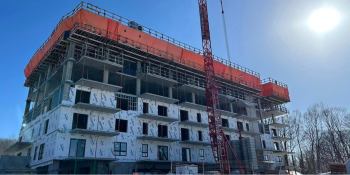Q&A Forums
Spray Foam With Borates? Post New Topic | Post Reply
| Author | Comments |
|---|---|
|
William Geary
Posted: Feb 04, 2009 11:23 AM
|
Spray Foam With Borates?
Mason,Do you know of any spray foam manufacturers that make a spray foam with borates for insect control? I know that R-Control makes foam panels with borates (their Performguard line) but I'm not aware of any spray foam with borates. Although foam is not a food source I've heard from carpenters who have found extensive tunnels and nests of termites and carpenter ants in foam. The problems have been mostly at or below grade, but carpenter ants can enter a structure anywhere. I like foam insulation, but a little insurance could be worthwhile, especially in older structures that my not be as tight as new construction. Also, have you ever seen any insect issues in structures containg spray foam? Thanks, Billy |
|
mason
Posted: Feb 05, 2009 08:16 AM
|
I am not aware of any sprayfoam supplier that has included borate or other insect repelling chemicals in their formulas. (My apologies to any supplier that has included them in their formula. If you have please let us know) However, suppliers and chemical companies (beginning with Dupont in the mid 1960s) have tested sprayfoam against insect/termite infestation. The Dupont study buried foam for 10 years in a hot humid climtate (Houston, TX). The foam maintained its physical properties and had only slight termite damage. Insects (particularly termites and carpenter ants) can burrow into sprayfoam. But, the insects will follow the path of least resistance towards food. If sprayfoam is blocking their path to it, they can burrow through it. But they will follow the path of least resistance first. So, if there are cracks, gaps and crevices in a foundation wall and/or insulation boards, the insects will more easily make their way into the structure. With sprayfoam, they have an impediment that requires some additonal effort. I typically see insect damage in foam on roofing applications where old rotten wood was sprayed on the edges (wood nailers, fascia, etc). The insects are trapped by the foam and can't get out without burrowing into the foam. After they are in the foam, they make their homes there. I have not seen or heard of much damage from termites in below grade foundations. I would like to hear some first hand accounts from readers on this issue. Have any of you seen termite damage to houses or buildings in below grade applications when sprayfoam was installed as insulation below grade? |
|
William Geary
Posted: Feb 05, 2009 09:46 AM
|
Mason, Thanks for your thorough answer. To be clear, the anecdotes I heard had to do with foam board, not spray foam. I'm not sure this would make a big difference chemically depending on the type of foam (I doubt the bugs care about open, closed, polyurethane, or polyiso because it's not a food source), but perhaps there could be a difference due to the openings and cracks that can exist when foam board is used depending on whether they taped or sealed the seams between the foam boards. Also, foam boards are used on interior and exterior applications but spray foam is usually used on the interior of structures except for some roofing and crawl space applications. When spray foam is used on the interior it is not between the bugs and the food source unless the foam is used to tunnel between studs or rafters or such after the bugs are inside the structure. There's someone with firsthand experience (on foamboard) over on Fine Homebuilding's discussion forum and I'll see if he'll comment here. I would be interested in hearing about the spray foam firsthand experience too. Thanks. Billy |
|
William Geary
Posted: Feb 06, 2009 10:28 AM
|
You can see pictures of insect damage in foamboard here: forums.taunton.com/tp-breaktime/messages?msg=116179.1 But I don't know if sprayfoam would have the same problems when applied to the interior of structures. It would make me think twice about using untreated foamboard as exterior sheathing, though. Billy |





























